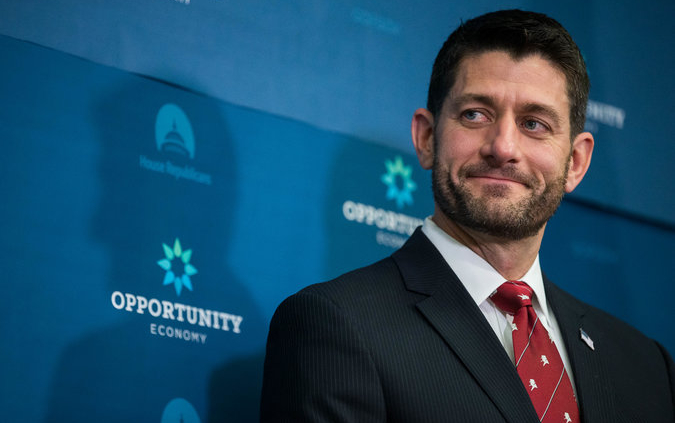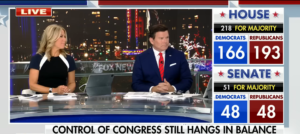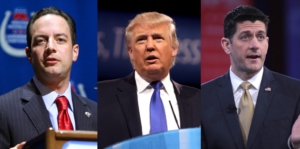Agenda Setting, Under the Radar
Here’s What You Need to Know
Flying under the radar of the presidential campaign circus is an effort by Congressional Republicans to help define what should be debated and discussed when both parties have nominated their general election candidates, including the all-important topic of tax policy.
In mid-January, Speaker of the House Paul Ryan announced at the annual House Republican issues conference that members would be working on a “bold, pro-growth agenda to be presented to the country,” touching on national security, jobs, health care, poverty, and constitutional authority. Three weeks later, Ryan announced the members of six task forces that would be charged with developing that agenda. Last week, the Task Force on Tax Reform released their mission statement, principles, policy reforms, and outcomes they want to achieve.
Here are four things you need to know about the House Republicans’ tax reform agenda and tax force …
Subscribe to Receive Insights
"*" indicates required fields
- It’s The Economy, Stupid: It might seem obvious, but it’s important to note that the Tax Reform Tax Force’s mission statement is squarely focused on growing the economy for the following reason: to contrast themselves with Democrats who want to use the tax code for social engineering. Using tax reform to talk about creating jobs vs. creating more government is the messaging playing field Congressional Republicans want to play on in a chaotic, unpredictable election.
- Aligning With The Nominee: There’s a reason why Paul Ryan reached out to Donald Trump and Ted Cruz earlier this week: lay the groundwork for the top of the ticket and down-ballot candidates to get on the same page when it comes to the party’s bread and butter of economic issues. Notice that the Tax Reform Task Force’s recommendations have some specificity, but not too much – all in the effort to make sure that any nominee can subscribe to the mission.
- The Brady Bunch Of One: While the other task forces have multiple members, notice that House Ways & Means Chairman Kevin Brady is the only member of the Tax Reform Tax Force. One could speculate on why this is the case. But it will be up to the honorable member for Texas’ 8th Congressional District to lay the groundwork on this critical issue for the general election and for 2017.
- Handicapping From Corporate Tax Officials: As reported by Politico Morning Tax, “a new survey from the accounting firm BDO found that almost four in five public company tax directors believe tax reform would happen if the next president is a Republican. Only one in three believe tax reform could get enacted under a Democrat. Tax directors most want a corporate rate cut in tax reform … And while planning for tax reform under the next president is a pressing concern (21 percent), the issues most weighing on tax directors are international tax planning and the Organization for Economic Cooperation and Development’s BEPS Project (48 percent).”
News You Can Use
SCOTUS SHORT(ER) LIST
President Obama’s Supreme Court list got shorter this week when U.S. Attorney General Loretta Lynch and 11th Circuit Court Judge Adalberto Jordan both removed themselves from consideration. A spokeswoman for Lynch explained, “Given the urgent issues before the Department of Justice, [Attorney General Lynch] asked not to be considered for the position.” Jordan cited a “personal, family situation” as justification for the request. The remaining names generally listed as potential nominees include D.C. Circuit Judges Sri Srinivasan, Patricia Ann Millett, Merrick Garland, as well as 9th Circuit Judges Jacqueline Nguyen and Paul Watford.
FOIA’D DOCS SHOW HOW FOIA REFORM DIED
Despite President Obama’s campaign push for government transparency, a recent Freedom of Information Act (FOIA) request by the Freedom of the Press Foundation revealed the Obama administration has been working to undermine attempts at FOIA reform in Congress. In a set of Department of Justice talking points the potential changes to FOIA standards allowing for greater transparency were described as, “not necessary and, in many respects, will undermine the successes achieved to date by diverting scarce processing resources.” The new details have led to criticism from Congressional Republicans and government accountability advocates.
1-800-CEASEFIRE
The Associated Press reports, “The State Department said Wednesday it is working to fix language issues with staff at a 24-hour telephone hotline it set up for Syrians to report alleged violations of the cease-fire that took effect last weekend. Spokesman Mark Toner told reporters that at least some of the volunteer operators taking calls were not fluent enough in Arabic to accurately log the allegations.” Toner also said that “the U.S. was aware of reports that the Syrian government may have used chemical weapons in attacks on opposition forces since the truce came into force. However, he stressed twice that the reports were not confirmed and were still under investigation.”
2016 TECH STACK MAP
Contently’s Shane Snow mapped the presidential candidates’ technology, finding Clinton’s website has the most tracking services and ad tech, followed by Cruz’s site in both categories. Clinton also has the highest online influence, although Sanders has the most shared content, and Trump has the most Twitter and Facebook followers. Regardless of who wins the election, Snow concludes, “Some of the biggest winners of this election—and probably many future elections—will be the software companies selling to everyone.”
2016 DESIGN ON A DIME
Meanwhile, over at Fast Company’s Co.Design site, user experience expert Chris Calabrese evaluates each of the candidates’ website design effectiveness. Calabrese gives Sanders the best site, with Clinton and Cruz close behind. Calabrese says Trump’s site is the worst design, which raises the question of how important websites remain in the age of social media.
TRUMP TV
In their latest Presidential Campaign Ad Scorecard, AdAge reports that Trump’s campaign has spent only $11.5m on campaign ads this election compared to $80.2m for Jeb Bush, $61.8m for Marco Rubio, and $41.3m for Hillary Clinton. “This, of course, is because Mr. Trump constantly says outrageous things that the media breathlessly reports on, saving him from having to spend as much on proper advertising as other candidates,” notes AdAge’s Simon Dumenco. In fact, according to The Economist,Donald Trump is dominating the airwaves. In a measure of presidential campaign coverage on network TV evening newscasts from 2015 to Feb 2016, Donald Trump has averaged over 400 minutes, compared to less than 100 for Rubio and Cruz.
MAKING GOVERNMENT TECH FRIENDLY
When President Obama assumed elected office, he said “Government has done technology and IT terribly over the last 30 years and fallen very much behind the private sector.” This technology gap has resulted in dozens of failed projects (think Healthcare.gov and the F-35 Joint Strike Fighter) and trillions of dollars of waste. Trae Stephens of Founders Fund recommends three critical steps for the government to bridge this gap: 1) “Empower [engineers] to take on ownership and risk and unshackle them from bureaucrats and program managers,” 2) “Give talented people room to solve problems in elegant and creative ways,” and 3) “Reform the requirements process to stem the flow of large program budgets into massive dysfunctional bureaucracies.” The United States has the best tech community in the world. The government must harness this power if the US wants to maintain it’s competitive edge.
PR FOR GOVERNMENT, PAID FOR BY TAXPAYERS
The U.S. government is effectively the second largest PR firm in the world accordingto the Open the Books project. Their report reveals that the federal government spent $4.3 billion on public relations over the last 8 years, including $2.4 billion in salaries and $10.9 million in bonuses going to “Public Affairs Officers” employed by over 200 federal agencies. As Open the Books founder Adam Andrzejewski said in a TV report, “We have taxpayer dollars being spent to convince taxpayers to spend more taxpayer dollars on the growth of government.”
MARCH FROM WASHINGTON?
While accepting an award as 2016 Association Executive of the Year by Association Trends, National Association of Manufacturers President and CEO Jay Timmons called for trade association leaders to reach beyond the Beltway with their message. “Instead of speaking only to Washington,” Timmons said, “We have to speak to the people of this country – outside the Beltway – and offer bold plans and a vision for the future.” While many think of associations as special interests, Timmons argues associations can “Speak out for what is right. And good. And for those who think their voices don’t matter anymore.”
Mark Your Calendars
Upcoming Debates and Speeches:
March 10 – CNN GOP Debate (Miami, FL)
Upcoming Primaries and Caucuses:
March 12 – Washington DC GOP convention
March 15 – Florida, Illinois, Missouri, North Carolina, and Ohio primaries
Subscribe here to get TL;DR in you inbox each week.



